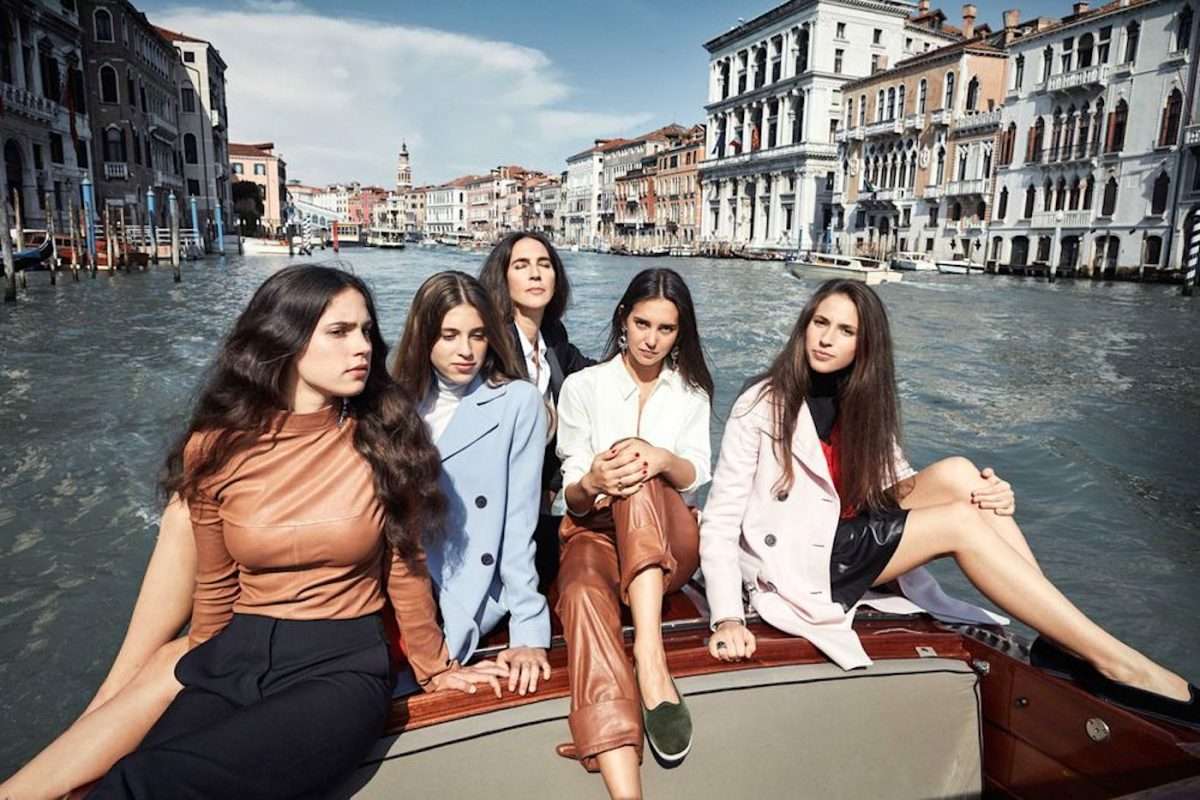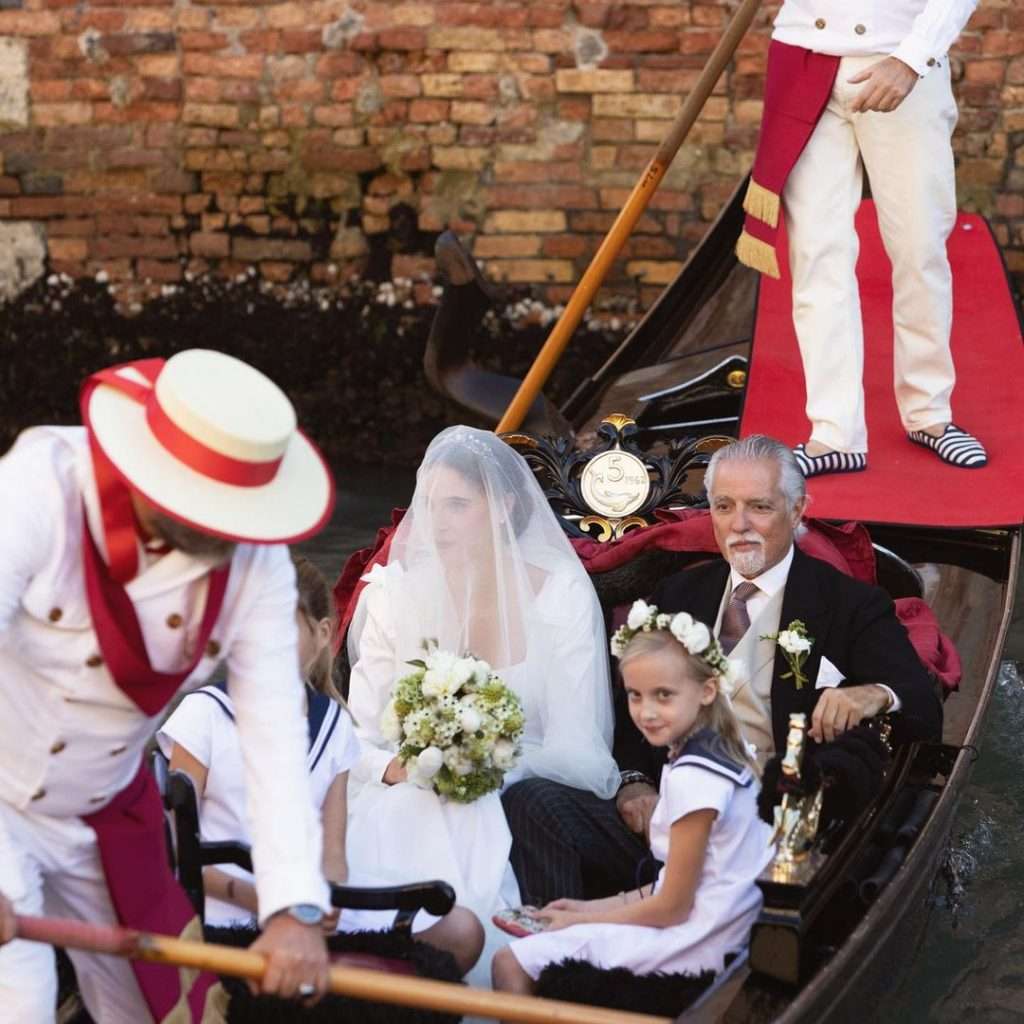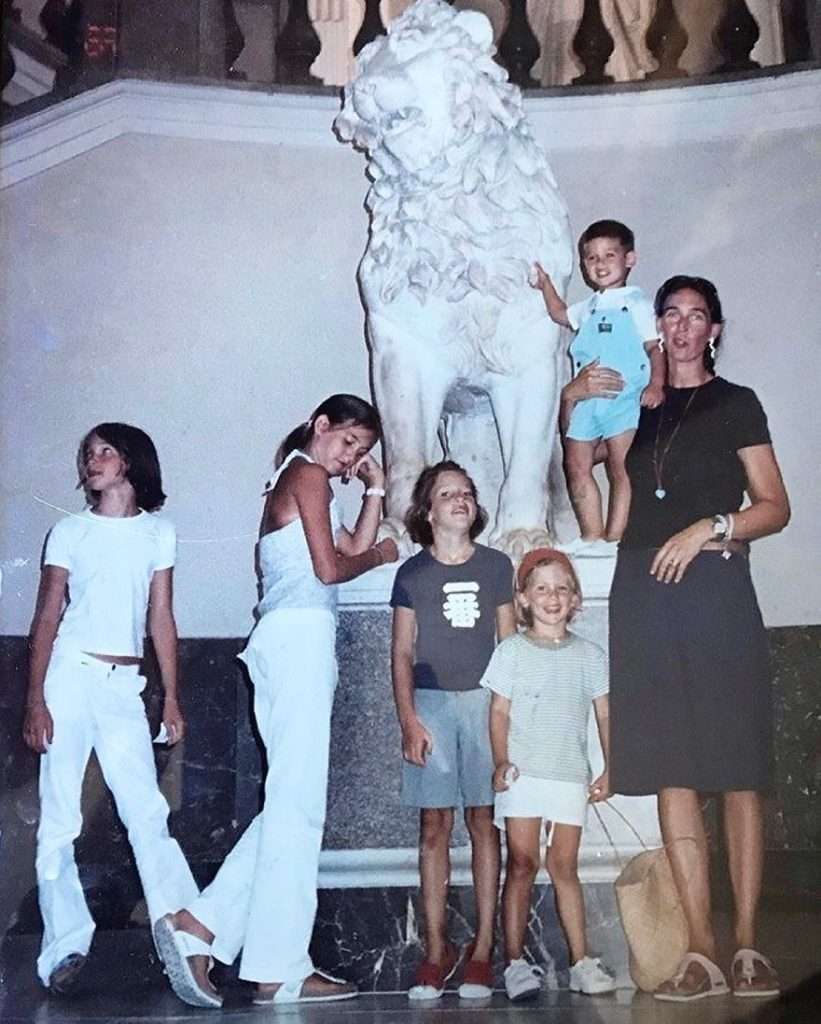Art & Photography, Culture, Style


There are small comments, and there are jibes and jokes, and as the Arrivabene family settle into our conversation, the image of a very familiar, happy family appears in frame. Mother Bianca is in the centre, advising on the interview and keeping everyone in order. On the right, Father Giberto beams a warm smile and interrupts with charming quips. Their son hovers inquisitively but soon moves out of sight, and then daughters Vera and Viola are called over (beautiful girls with their mother’s eyes) and after all the pleasant chatter and niceties, Bianca announces, “All here? OK. We’re ready.”
This is a normal family with a very unique story. The Arrivabenes have lived in the Palazzo Papadopoli—one of Venezia’s eight monumental palazzos—for over two-hundred years, overlooking Venice’s Grand Canal. They are also rooted in aristocracy: Giberto’s full title being the enviably romantic Count Giberto Arrivabene Valenti Gonzaga (something only Lampedusa could’ve dreamt up) and Bianca is the princess of Savoy-Aosta. But their titles do not define who they are more than the city they live in, the city they love to speak about, and the city that inspires their impressive creative endeavours, which include Giberto and Bianca’s Murano glass collection, Giberto Glass, and their daughters’ chic Venetian furlane shoe brand ViBi. Indeed, in our conversation, I realise that while I know many Romans, Ligurians, Sicilians, and Neapolitans, I do not know any true Venetians; and that this family is as well-positioned as anyone to explain to me the maritime city’s nature—the one we foreigners are largely deprived of.
In the end, the Arrivabenes are a warm-natured, modern family; they wear their heirlooms proudly, but do not rely on them. Because as Prince Lampedusa himself wrote so famously: “If we want things to stay as they are, they will have to change.”
Chris: You reside on the top floor of the Palazzo Papadopoli. The rest was recently taken over by the Aman Resorts group. Do you feel that your presence is an asset to tourists?
Bianca: It doesn’t affect our lives. There’s a very nice story about the founder [Adrian Zecha] of Aman Resorts looking for a place in Venice for more than a decade. He was about to give up, but eventually he was introduced to Giberto and was taken aback by the building and its Tiepolo frescoes, but he said, “I’m not selling it. You’re going to want to rent it. We want to stay.” And of course, we’re still here, because this is our home. It’s not a house. They are different things. This is where our heart is.
Viola: Apart from my father, we have only ever lived in this part of the building. We’re aware that it is fortunate to be in such a beautiful place, but I’ve never felt that it’s any different from another family home—home is what you make it. My sister Vera even got married here last year.

Chris: Can you tell me about Venice today? It seems like there’s a creative renaissance happening.
Bianca: It’s always been a dynamic city. But we’re seeing something different. Because of tourism, the relationship Venice has with creativity has always been complicated, but more new addresses and museums are opening. The Cannaregio area is having a moment as a place to be. A lot of this comes from people from outside of Venice, and the areas on the outskirts are taking a new shape too, with the Architectural University, and others. So not only the centre.
Giberto: I was born here, and I can tell you as one of the few real Venetians, that a lot has changed. It’s another place. It used to be like a big village where everyone knew each other, and we didn’t have the mass invasion of tourists yet, or the vulgar souvenir shops. It was a very decent and sophisticated type of tourism then, with small boutiques and artisans. But the world is changing, so we have to go with it.
Chris: The local Venetian population is low. I’ll take a guess…
Giberto: You don’t want to know the real number [laughs]. I’m the only full Venetian among us four you see here.
Bianca: That number they put out is a fake number. It’s really less. I am registered as a Venetian, and they include that in the statistics. But really that’s false because I was born in Tuscany—so it conflates permanent residents with those with roots in the city.
Chris: Between the shoes and the Murano glass, this is a very creative family.
Giberto: It’s a family of big brains [laughs]. Two of the people you see here are creatives and two business-people. Can you guess who is who? [I answer two-out-of-four, which is good going, Bianca and Viola being the business-people]. Bianca and I work on the glass, and Vera and Viola run ViBi. Giberto started after I had old friends ask me to repair the Murano glass that had been kept in their family homes. So twenty-years-ago, I decided to redo glassware in the old way, but with newer shapes, preserving the past but staying modern [like the stunning palazzo collection]. It’s a difficult situation for Murano, now. If gas prices don’t ease, the entire Murano glass industry could die. I’ve seen furnaces close fast first-hand.
Chris: That’s awful. No one speaks about that.
Giberto: All that history and tradition, and it could go.
Chris: How does the palazzo inspire creativity or your desire to preserve these traditions, like the furlane slippers?
Viola: More than our home, we are inspired by Venice itself. I grew up watching the colours of the sunset bouncing against the palazzo. There is something special about light in Venice. It’s different. The city has a grand aesthetic like an open-air museum, which is good for creativity when designing. Of course, the house is very beautiful. To return home, especially, from somewhere else is magic. It is our small gem in the larger gem that is Venice.
Vera: You know…they say that there are spirits in our home. I have heard some things in the night, and indeed I remember that I couldn’t sleep some evenings, and I felt as though I was being watched by somebody.
[A brief discussion over ghosts, and a debate as to whether the palazzo is indeed haunted, commences. Giberto suggests that noises were mentioned by visitors in the past.]
Bianca: If there are spirits, I’m sure they are our ancestors looking over and protecting us!
Chris: Do you find the attention around the family’s aristocratic heritage strange? I read that Viola and Vera were coined Modern Swans by Town and Country.
Vera: I didn’t know about this.
Viola: I have seen it. That article comes up from time-to-time. But I don’t think about it. I’m a normal person. What is most important to me is focusing on our shoes.
Chris: Have gondoliers worn ViBi shoes?
Viola: For shoots, of course. We asked them to put them on for photographs [laughs] and indeed one of them stole a pair from us. He’s the man who drives our gondola, and he’s quite hardworking. They ask to borrow them, and you’re not sure if you’re going to see them again.
Chris: Have there ever been films that get Venice right?
Giberto: Death in Venice is wonderful. But I have to mention Anonimo Veneziano, which really captures the city and my memories of the seventies, especially the colours. Everyone should see that.
Bianca: Of course, there’s Don’t Look Now and The Italian Job. Yes, the remake…I even like that one.
Chris: I’m curious to know if there is one place in the city that brings you happiness, or a sense of nostalgia.
Viola: Right now, I can think of Santa Maria della Salute. It’s like a big wedding cake in the centre of the city that I sometimes just enjoy looking at. It could easily be from a Disney movie.
Bianca: In Venice, they actually have a saying: “It’s very sad to be raised there, because you will never have that feeling of visiting for the first time.” So if you have, in any way, a sense of beauty or an eye, you will understand this. I was eight- or nine-years-old on my first visit, and I remember the whole thing so clearly even today. The calm water, the gondolas…it wasn’t the beauty that first gripped me. It was a sense of being free.
Vera: For me, I think of the Festival di San Martino that takes place every year in November. The story goes that San Martino was riding a horse one day, and he stopped to cut his cloak in half to give to a freezing man as an act of charity. It is a celebration for local Venetians, especially the children, and I have these nostalgic memories of being with the family that are dear to me. There is also a competition for kids to paint San Martino each year, and my sister actually won it once.
Giberto: One of my other daughters, she’s very creative. I remember a funny moment from when she was at school. The students were asked to redesign their homes, and so of course, she did a cute little palazzo. That must have been crazy for the teacher [laughs].
Bianca: Did you go to Chiesa San Rocco? It’s important to see where we come from. There are Tintoretto masterpieces there, and many are considered to be his best works. Perhaps next time.
Chris: Next time, I’ll need real advice. In fact, where should I go to live and eat like an Arrivabene—like a real Venetian? Do you ever go to the Lido?
Vera: Of course. It’s a city you can walk around endlessly. And yes, we do swim in the Lido, and sure, we have certain secret spots and streets you won’t know. But that’s because the few people that are really from here try to keep these places sacred.
Bianca: With restaurants, we can’t give you anywhere to print, I’m afraid. We’ve all shared our favourite addresses with publications before and now we can’t even get a seat in them! So, I’ll tell you after…But when you next come to Venice, whatever you do, it is a place to visit with someone you love. Remember that.
Chris: I’ll keep that in mind.






